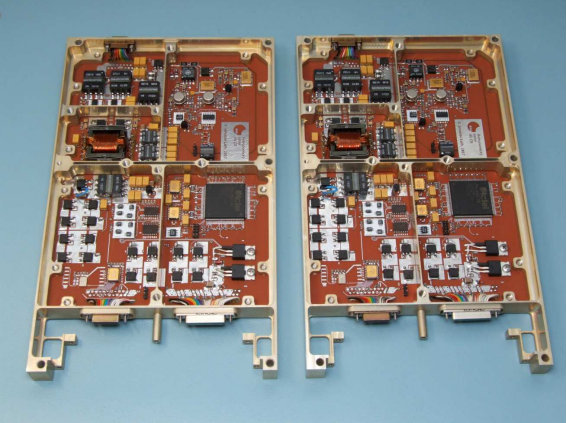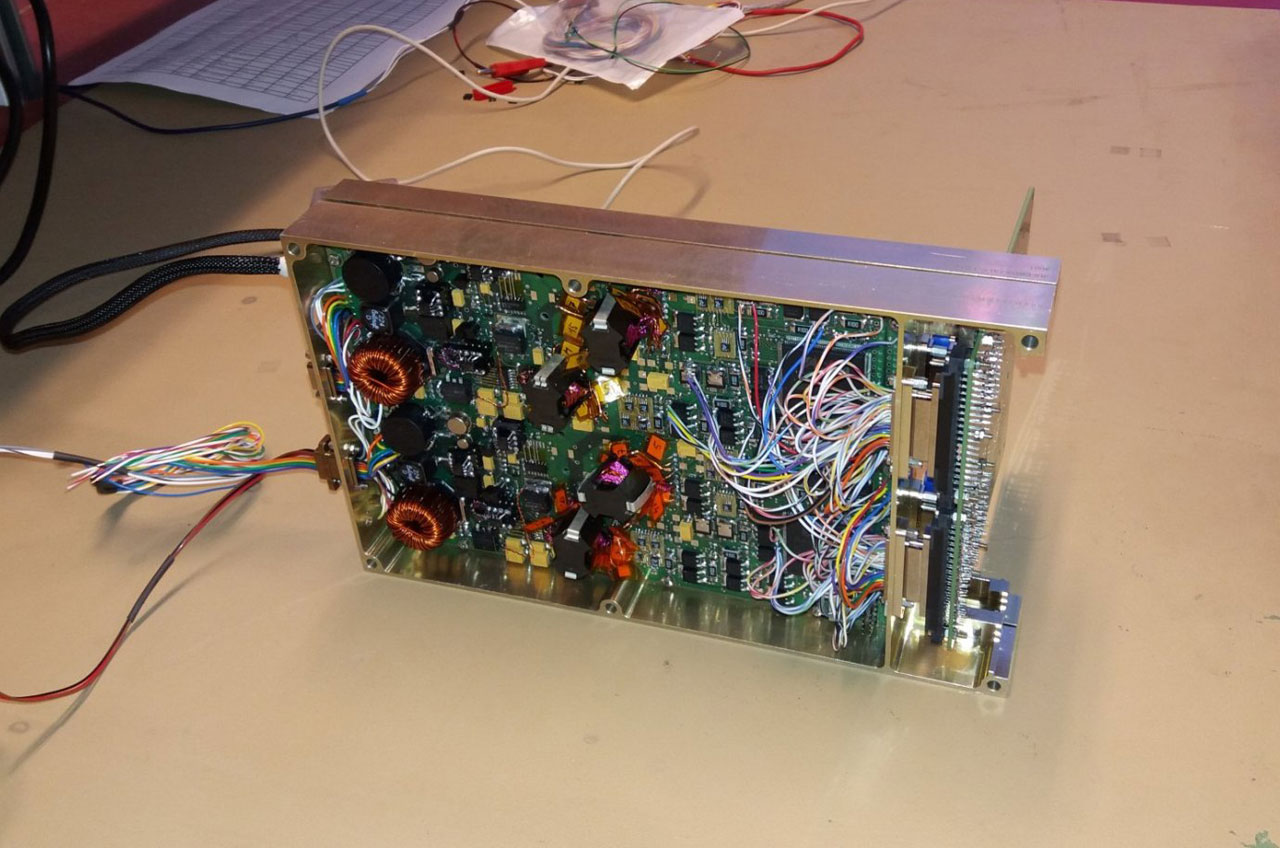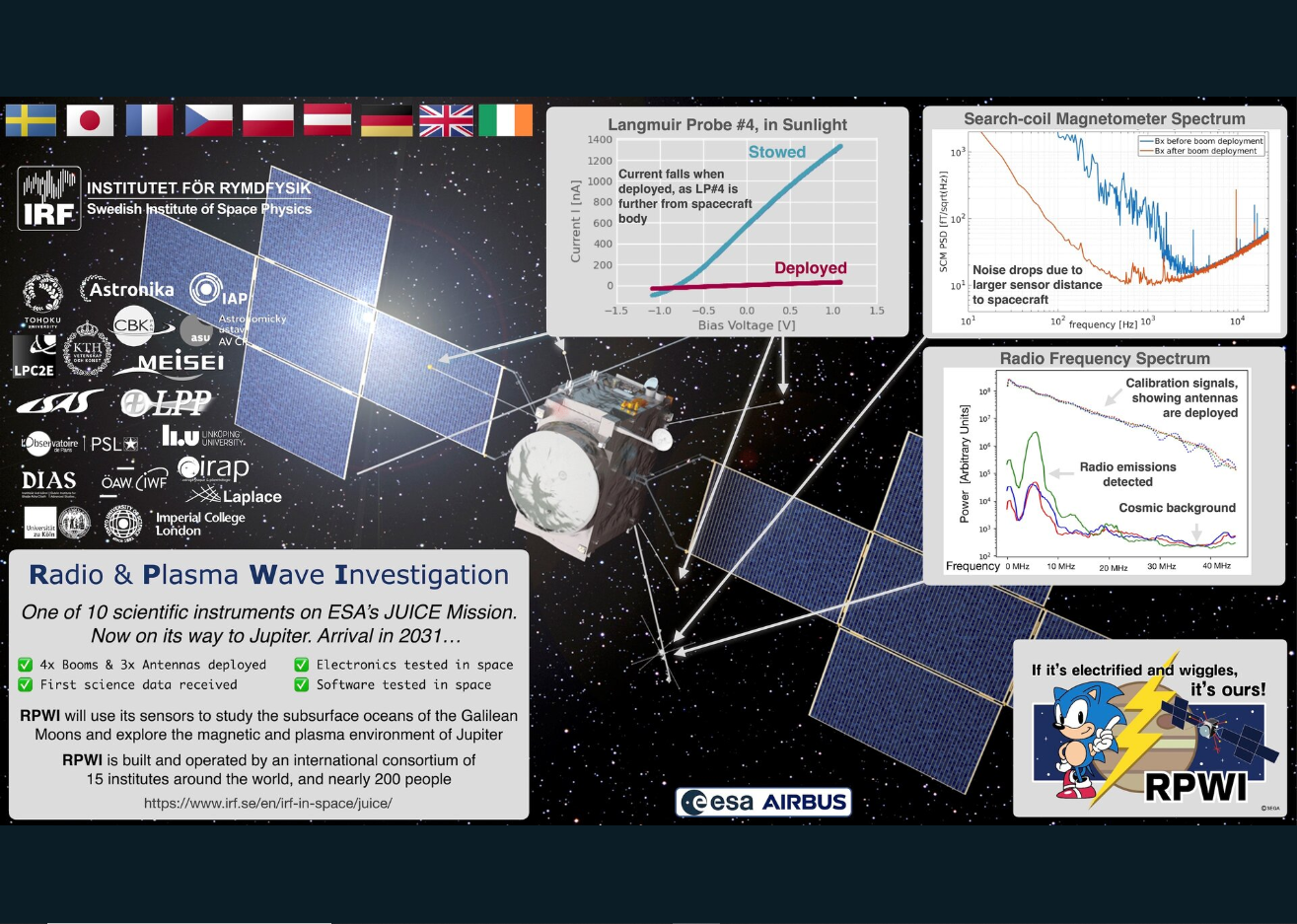Our circuit boards in space
We have reported on social media the successful launch of the JUpiter ICy moons Explorer (JUICE), the largest planetary probe aimed at studying Jupiter and its moons. The probe is equipped with a total of ten scientific instruments to provide a comprehensive analysis of Jupiter and its moons. Special attention will be given to Ganymede, a moon considered to have its own ocean and potential for habitability. Additionally, Europa and Callisto, two other moons, will be examined to gather comparative data on Jupiter's influence within its magnetosphere.
Czech research teams from the Institute of Atmospheric Physics of the Czech Academy of Sciences (AP AS CR) and the Astronomical Institute of the Czech Academy of Sciences (AI CAS CR) actively contributed to the development and preparation of the scientific instrument RPWI (Radio and Plasma Wave Investigation) onboard the JUICE mission. The AP AS CR team designed and constructed a multi-component analyzer for electromagnetic waves for this instrument, while the AI CAS CR team provided two specially designed low-noise power supplies for RPWI.

"The development of such a power device has its pitfalls. We have to keep a certain maximum weight, dimensions, it has to be radiation resistant and energy efficient," Jaroslav Laifr, the head of the RPWI power supply development, told the CZECH TECHNICAL UNIVERSITY blog in 2016. The probe itself will fly to Jupiter for eight years. Scientists wanted the probe to be alive for all that time. "The probe needs to be functional not only during the exploration of the moons of Jupiter itself, which will take approximately another 3 years, but also during the mentioned journey. For example, colleagues will calibrate the probe during this trip, so the power supply needs to be reliable at all times. And you can imagine what that might look like in deep space," Laifr added.
The circuit boards for the device were fitted with discrete components based on cold redundancy with very low noise DC/DC converters for deep space missions without optical or magnetic feedback. (1) Ground planes covered 95% of the area and two power planes were introduced under the FPGA. The main power switches are located near the edge of the PCB to increase resistance to thermal conduction flow into the power supply enclosure frame with the main electronics. No electrical components were connected to the frame itself, with the exception of the MDM interconnects, which are wired to the board.
The circuit boards were manufactured by the Czech company Gatema PCB according to the designs of scientists from the Institute of Atmospheric Physics of the CAS.
The RPWI (Radio and Plasma Wave Investigation) instrument will use an array of sensors and probes to determine the radio radiation and plasma environment of Jupiter and its icy moons

The JUICE mission took off on April 14 as part of the ESA Cosmic Vision program, addressing two main themes: the conditions for planet and life formation and understanding the functioning of the solar system. Overall, this is a significant and fascinating project with the hope of uncovering new insights into Jupiter and its moons, providing valuable information about the formation and evolution of giant planets and satellites both within and beyond the Solar System.
Currently, the probe is situated more than 26 million kilometers above the Earth's surface. In a year's time, it will come closer to Earth and then be catapulted closer to Venus, arriving there a year later. From Venus, the probe will be launched further into space towards more distant planets. However, this will be in September 2025, and its journey can be followed through a model visualization of its path.
Until then, all instruments will be tested in the space environment to ensure their functionality during the exploration of Jupiter's moons. The central control of the ESA has already managed to remotely deploy all solar panels, antennas, probes, and arms, which were safely stowed during the launch. Moreover, they have positioned and secured the probes and antennas on the RPWI, a reliable accomplishment involving the entire European community, including Gatema PCB.

The extent to which our printed circuit boards contribute to prototype manufacturing and the supplied construction drawings is often unknown to us. However, it brings us great joy when we learn that we have made a small contribution to an intriguing project with a truly celestial impact.
Source:
NEWS SERVICE - CZECH TECHNICAL UNIVERSITY IN PRAGUE, CZECH COMPUTER AND INFORMATION CENTRE. Mission to Jupiter with the contribution of Czech scientists. Https://aktualne.cvut.cz [online]. Prague, 2016 [cited 2023-07-31]. Available from: https://aktualne.cvut.cz/zpravy-z-medii/20160211-mise-na-jupiter-s-prispenim-ceskych-vedcu
LAIFR, Jaroslav. Radiation tolerant power electronics for space applications. Prague, 2018. Doctoral Thesis. Czech Technical University, Faculty of Electrical Engineering Department of Measurement. Doc. Ing. Karel Draxler, CSc., Dr. Pavel M. Trávníček.
Connect with our specialists